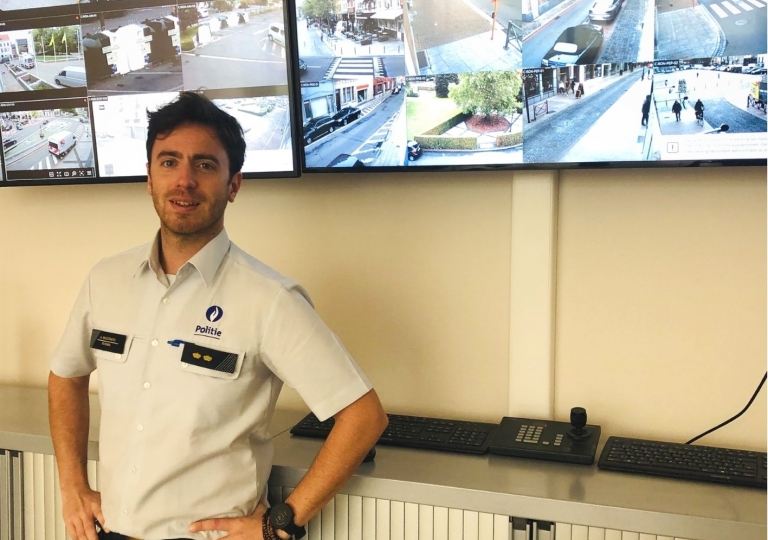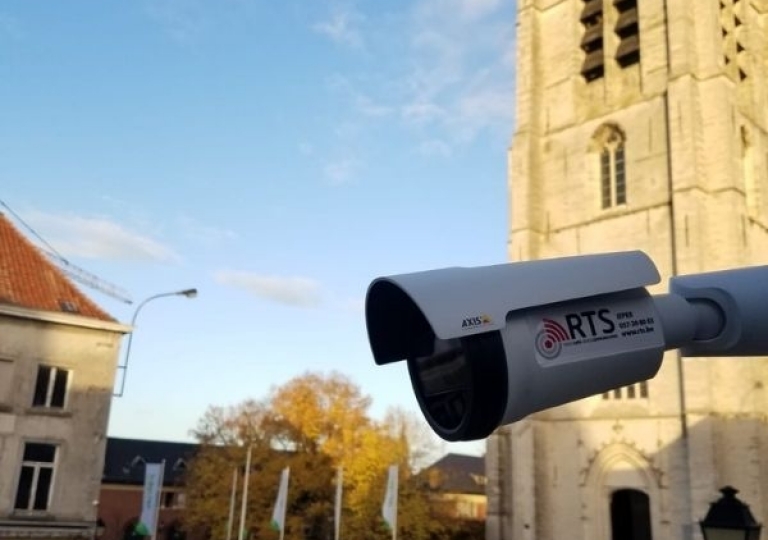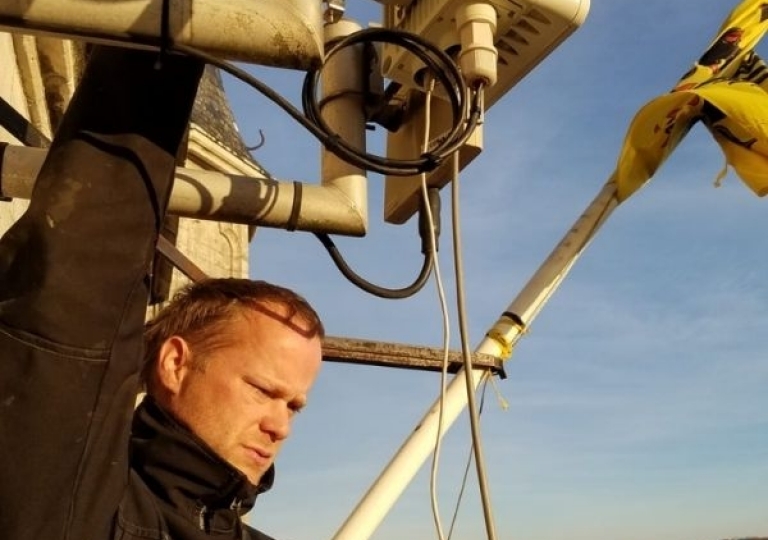Camera images very useful for collecting information
With its 26,000 inhabitants, the town of Ronse in the Flemish Ardennes was sometimes referred to as the small city of Brussels up until about ten years ago. Just about every weekend, young people would raise hell in the Grote Markt square. In 2009, the first cameras appeared on the streets and the nuisance visibly decreased. With the installation of the extensive network of 58 cameras, the city was the forerunner in the province of East Flanders. Hans Haustraete, Head of Operational Management at Police Zone Ronse since 2016, can no longer imagine police operations without cameras. He explains how the Ronse police deal with the RTS camera network.
The first RTS cameras were installed in Ronse in 2009. Was there a direct reason for issuing a tender for a camera network?
"The launch of the camera plan was part of a persistent problem of nuisance in the immediate vicinity of the Grote Markt, the entertainment district of Ronse. It got out of hand, and the police asked the city council to install cameras. Until then, Ronse only had experience with a few cameras in the vicinity of the football stadium that were used to maintain public order. When the cameras were installed on the Grote Markt, the problem of nuisance quickly disappeared. The cafés and nightlife are still there, but we have to intervene much less for fights."
The cameras have therefore helped to tackle nuisances in a particular neighbourhood. Over the past ten years, RTS has installed 58 cameras in the city.
What do police officers still use the network and the images for?
"The cameras have also proved useful in judicial investigations. When serious events occur, the first reflex of our colleagues is now to check if there are images, are they useful or can we extract information from them. It is certainly not the case that all facts are always in the picture. That is a misconception. Some people think that if there are cameras, all the facts are always nicely recorded on film. Those who believe that will be disappointed. The images do serve to reconstruct the routes taken by certain perpetrators, to identify people, to rule things out, to confirm or deny alibis, to determine a plan of approach and to monitor large events. A whole host of advantages if you think out-of-the-box. I can no longer imagine police work without cameras. As far as I'm concerned, all the blind spots in the city can be covered in the coming years."
Can you give some concrete examples of cases where camera footage has played a key role?
"A recent example is of how a small group of police officers were able to verbalise and apprehend a group of 20 or so people during the ban on congregation in dealing with the corona crisis. A local resident reported the gang by telephone. The colleagues then located the gang through the camera images and worked out a plan to surround them. A few people were brought to book, but we also picked up a number of tipped-off suspects. A few years ago, an exhibitionist was working in the city garden. He was a migrant worker who lived here temporarily and was therefore unknown in the neighbourhood. His actions themselves were not on camera, but the fact that he was on camera just before and after the facts made him confess when confronted with the images. Last year, we found the home of a grab thief by analysing the images, and yet we identified a kidnapper thanks to the images. Another example is fly-tipping. While in 2010, 200 reports of illegal dumping were made, last year we made only 40 reports. The cameras therefore have a direct deterrent effect and indirectly prove their usefulness in gathering evidence. It's just a matter of positioning them cleverly and in strategic places."
Do you constantly monitor the images?
"No. We are a small police zone with about 60 police officers and about 15 support staff. We do not have the capacity to have someone monitor the video wall constantly. Occasionally, at weekends or during events such as carnival, city festivals and demonstrations, we do. In the past, you had to deploy a huge number of people on site to have a good view of the site, whereas now you have a fantastic helicopter view in two clicks."
You have been working with the updated Video Management System from
Eocortex since 2018. Are you satisfied with this system?
"Yes, definitely. Before 2018, for budgetary reasons, we worked with the free software that came with the camera. I would not recommend that. However, RTS made us aware of new VMS software and proposed a programme tailored to our city. We are not an area that needs to do heavy judicial investigations with a lot of big data. So taking into account what we need, RTS put together a package. My computer-related stresses about its use turned out to be unfounded. After a training course, our employees like working with it and are happy to do so. It is even very contagious, the colleagues give each other tips and tricks. The system works intuitively and is quite simple."
“Vooral de bereikbaarheid en interactie tussen de zaakvoerder en het technisch personeel zijn een grote troef. Als we bellen of mailen, dan krijgen wij vrijwel direct een antwoord of wordt een interventie snel ingepland. RTS speelt kort op de bal. De klantenkennis van zaakvoerder Ronald is een enorme troef. De voorstellen worden gemaakt vanuit het perspectief van de klant. Hij denkt actief mee naar oplossingen en soms melden de RTS-service engineers al een probleem alvorens wij het gezien hebben. Bovendien biedt de firma producten aan die we nergens anders vinden zoals bijv. het huren van bepaalde camera’s, eigen producten tegen het sluikstorten, … . Ik zou RTS omschrijven als een kleinschalige firma met de service van een grote speler.”
- Hans Haustraete, diensthoofd Operationeel beheer Politiezone Ronse


